
Microsoft SharePoint is a bit like a Swiss army knife. It has a ton of different functions, some of which are useful, and some that aren’t. If you’re using SharePoint or one of several SharePoint alternatives and you’re not careful, you might wind up with a tool that’s so bloated with features it doesn’t really succeed at any of them.
As SharePoint consultant Jason Masterman says, “Customers are [implementing SharePoint] because they own it. It’s not that they’re doing research and choosing [SharePoint]. They’re doing it because they own it.” In a 2013 survey, only 6% of respondents reported completing a successful SharePoint project. In 2015, that number was up—but just to a mere 11%.
We think more than 11% of users deserve to be happy with their workflow tool. So we looked at 7 SharePoint alternatives and examined how they stack up in terms of price, capability, and user-friendliness. Here’s what we found.
SharePoint Alternative #1: Google Workspace
It’s hard to get users to pay for an upgrade when the free version is pretty good and highly adopted, but Google Workspace has managed to do just that—for over 1 million organizations. The file sharing and document storage feature, Drive, is part of the Google Workspace, which is a pretty cheap alternative than pricier enterprise SharePoint alternatives.
Google Drive is more functional and cheaper for small businesses.
They offer a 30-day free trial, and after that, two options:
- Business Starter: $6 per month per user, 30 GB storage
- Business Standard: $12 per month per user, 2T of storage per user
- Business Plus: $18 per month per user, 5T of storage per user
Better for: Locating Documents
One common SharePoint problem is that it’s really hard to locate documents. Some of this is that they’re not tagged well, or aren’t organized into proper folders. When you have a ton of people using the platform and no clear organizational structure, it’s easy for things to get lost in the mix.
As a SharePoint alternative, Google Drive, on the other hand, comes with Google’s most famous ability baked in: the search feature. Users can even search for features from directly within Gmail. No more toggling back and forth between buried email threads and SharePoint to search for whatever that document ended up being called, and worrying if they have the final version.
Unlike SharePoint, Google Drive doesn’t have project management capabilities. So while you can share and store documents with ease, it’s hard to pin down the roadmap for where an assignment is going.
SharePoint Alternative #2: Box for Business
Box for Business is another file-sharing and collaborating tool that draws companies away from SharePoint. Its primary feature is its storage ability, with a relatively low price tag:
- Business plan: $20 per user per month with unlimited storage
One important feature to note: external users can only view documents in Box for Business. So if you’re collaborating with people outside of your organization and you want them to have full editorial access to the content, you’ll have to add each head at the price of $20/month.
In addition, Box does not offer offline access, so let’s hope your Internet connection stays in tact if you need to grab documents off of the cloud.
Better For: Storage on the Cheap
That said, the tradeoff is worth it for a lot of people, since Box offers something crazy appealing: unlimited storage. For those used to hitting their Dropbox limit and sighing, it’s practically a drool-worthy SharePoint alternative.
Another major point of contention in the Box for Business v. SharePoint debate is of special interest for anyone who needs information governance on their cloud-based document storage. Both offer two-factor authentication, and are certified in compliance like HIPPA and PCI DSS, to ensure that you’re protected.
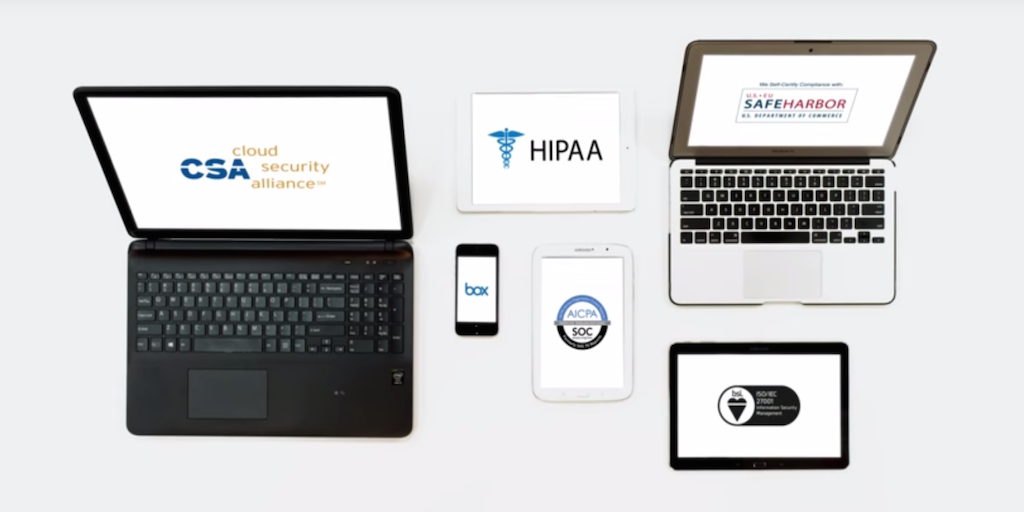
So if you’re looking for a SharePoint alternative for secure documents, Box might be the route to go.
SharePoint Alternative #3: Process Street
We started Process Street precisely because SharePoint and SharePoint alternatives weren’t capable of getting the job done. In addition to having a deeper feature set and better versioning platform, Process Street tackles something that SharePoint is notoriously terrible at: managing recurring workflows.
For more information, you can check out our pricing page.
Better For: Managing Recurring Workflows
Workflows and processes are one of the features SharePoint talks up, but in a study of hundreds of SharePoint users, the platform consistently came up short. 43% of companies surveyed had a hard time expanding the use of SharePoint to additional business processes. Almost 40% couldn’t build processes from SharePoint’s forms.
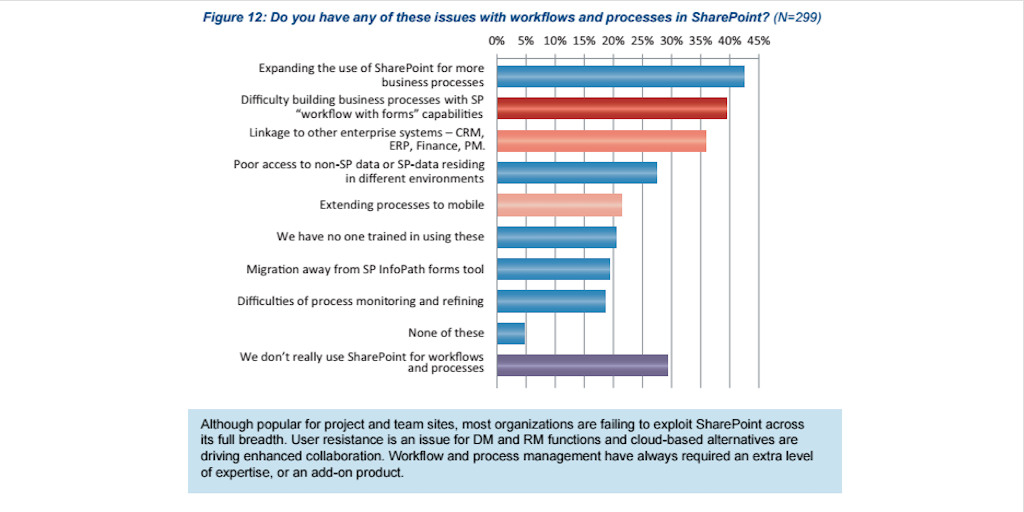
Process Street’s easy to use templates make it easy for your team to follow the same format every time they run a workflow.
It’s easy to create your own process template. You can also export process templates as Word documents, and create email templates from inside the app. No matter what kind of repeating workflow you have, it’s going to get done in a consistent manner. You can also easily move it between offices and share, so that common SharePoint problem in which documents get siloed isn’t going to happen.
Check out some of our templates to get you started with automating your workflow:
- Employee onboarding checklists
- Client onboarding
- Customer success processes
- Standard operating procedure
SharePoint Alternative #4: Confluence by Atlassian
For all you JIRA and HipChat users, Confluence is probably just another line in your Atlassian bill. It’s an elegant document sharing and workflow tool, with a bunch of different options depending on your team size, the plan you select, your add-ons, and whether you want it hosted on your server or theirs.
Just take a glance at their pricing page:
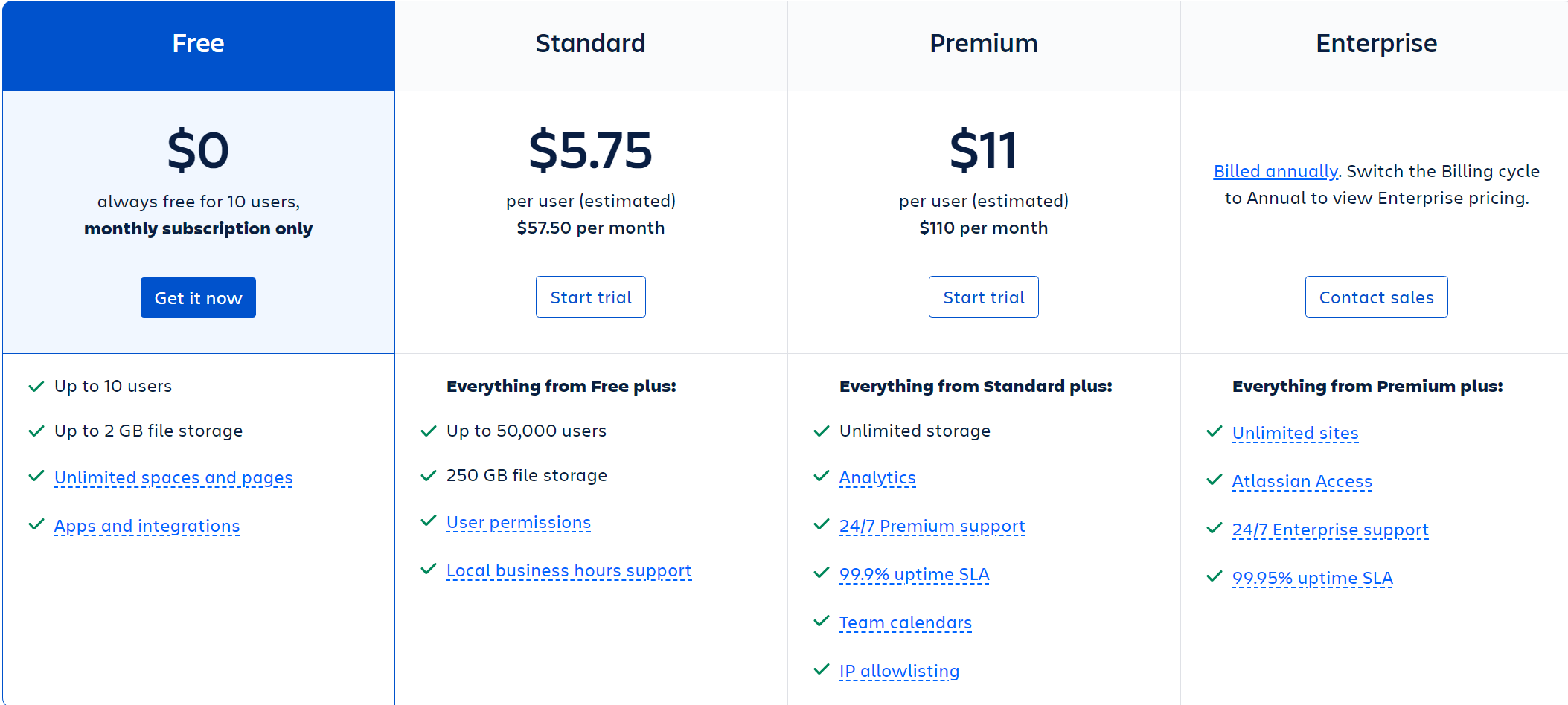
Like other Atlassian products, Confluence is really expensive. Small and growing teams give a one-time payment, but enterprise teams are on a SaaS model that changes based on the number of users on your plan. What’s more, the SaaS price is stable until you hit a threshold, but then it could jump from $500 to $1,000 overnight.
That said, it could be worth it for some teams, since their technical documentation and knowledge base capabilities are really sophisticated. If you’re looking to set up an intranet for your giant company, and need a ton of documents shared and cataloged, Confluence could be the way to go.
Better For: Using with Other Atlassian Products
Confluence integrates with JIRA and HipChat because it’s Atlassian. It’s also easy to set up, unlike SharePoint. It’s best for enterprise companies with the cash to shell out for it, because you’re paying for customizable products and excellent customer support.
SharePoint Alternative #5: Redbooth
Redbooth is a project management tool focused on keeping everyone in one place. Project management, they believe, shouldn’t get stuck in email or Slack. It tackles one of the major problems of SharePoint: that things get really scattered. By keeping everything in one place and easy data visualization like Gantt charts, Redbooth wants to keep a whole team in line in a way that SharePoint struggles to do.
For small teams, it’s relatively cheap.
- Pro plan: $9 per month per user
- Business plan: $15 per user per month
Unlike other SharePoint alternatives, Redbooth is primarily for project management, which means it comes up short in a lot of areas. There’s no document storage capabilities, and its search abilities are poor. It does, however supports Box (and SharePoint), so there are good integrations there if you need them.
Better For: Real-time Communication
Redbooth focuses on giving an experience similar to real-time communication, through chat and video. You can do a presentation remotely, providing voiceover to a PowerPoint everyone sees on their screen.
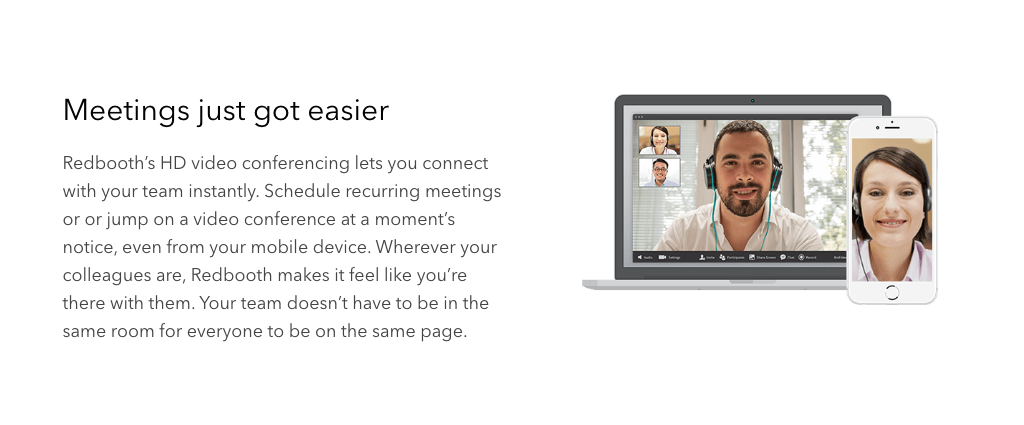
The downsides? There’s no advanced task management for more complicated tasks, no repeatable processes for project management, and very few customization options.
If you’re a distributed, small team where everyone is on the same page and needs an overview of where things are, this might be better than SharePoint. But once you get into more complicated territory and need repeatable workflows done, it’s not going to do a great job.
SharePoint Alternative #6: ONLYOFFICE
ONLYOFFICE is a cloud office solution to help teams share documents. Its primary selling point is that it’s compatible with Microsoft Suite. While it’s not that sophisticated, ONLYOFFICE is certainly more expensive than some other SharePoint alternative options.
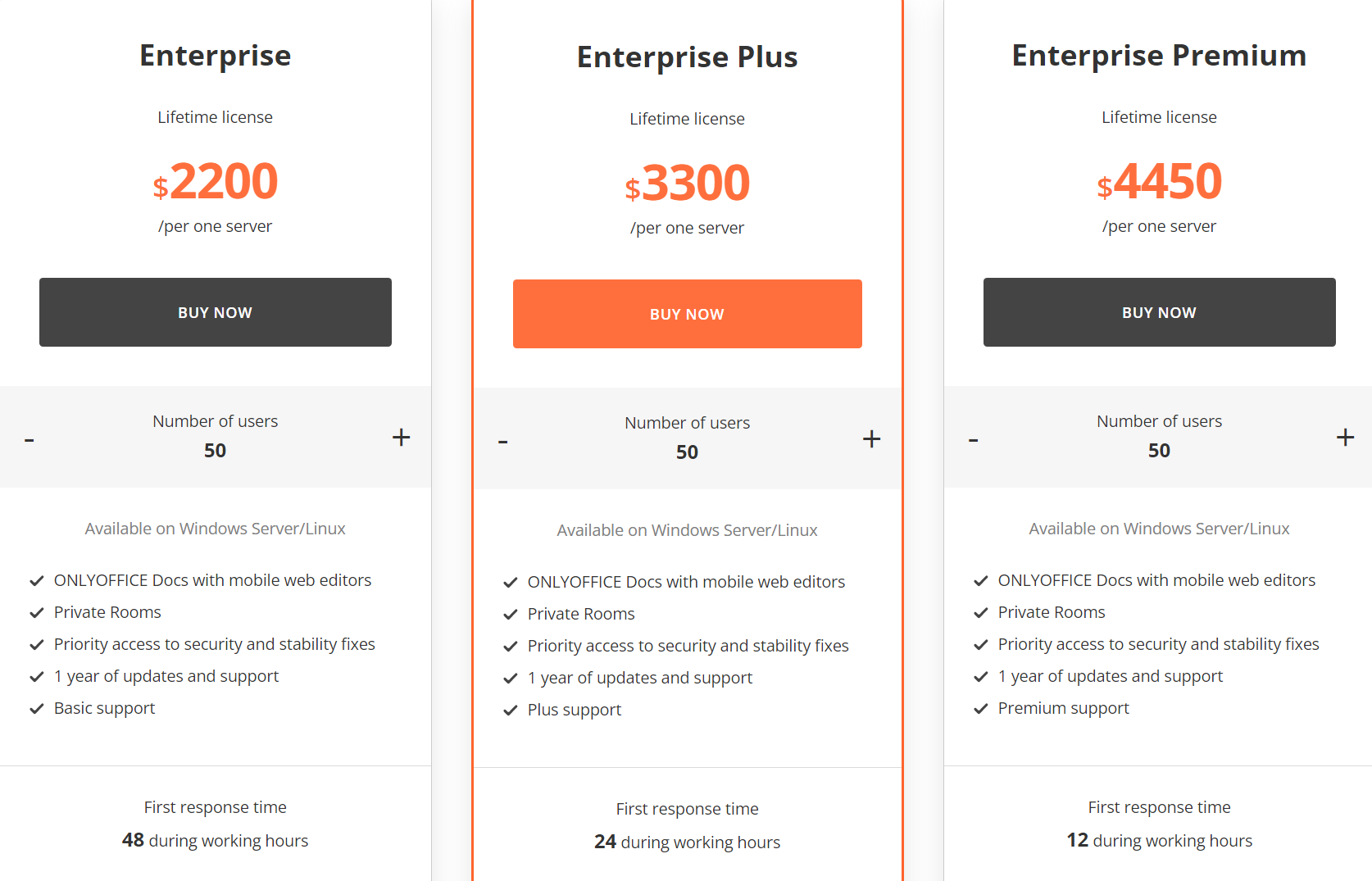
As a side note, non-profits and educational institutions can use it for free. So if you’re looking for a CRM for all your volunteers, ONLYOFFICE beats out SharePoint in a heartbeat.
Better For: CRM
However, in paying for ONLYOFFICE, users get access to another service: the CRM. ONLYOFFICE offers a customizable CRM with lots of add-ons.
The CRM feature allows you to add contacts from email to the CRM database, so it’s easy to set up. Users can also message directly within the CRM, and manage documentation, edit files, and then attach them to messages to customers, so you don’t have to exit to get back and do your thing.
SharePoint Alternative #7: Podio
Like SharePoint, Podio has a bunch of different tools that seem haphazardly piled together.
But unlike Microsoft, they present an easy way to manage them: the apps marketplace. Podio, one of the best SharePoint alternatives, is infinitely customizable, and users readily share how they use the tool with other people on the site.
With Podio’s open API, users can create all kinds of apps (which are all free). Users assemble packs of apps that they use in Podio for various projects (from Scrum to “Scrum-ish”) and anyone can download them. They sort by industry and project type. There are also reviews below and a vibrant discussion of what tools work and what don’t.
Sorting deliverables, like running inventory, to workplace happiness apps, like buying someone a virtual pint (the equivalent of a high-five).
Better For: Customizing Your Toolbox
Podio’s best feature is that it has an apps marketplace, allowing you to choose whichever pack makes the most sense for you and your team. Drag and drop the apps so that they’re customizable for exactly what your team needs, circumventing one of the major problems of Sharepoint—not knowing what to use it for.
We’d love to hear about the different ways you use SharePoint or SharePoint alternatives in the comments. Who knows? You may even get featured in an upcoming article!







 Workflows
Workflows Forms
Forms Data Sets
Data Sets Pages
Pages Process AI
Process AI Automations
Automations Analytics
Analytics Apps
Apps Integrations
Integrations
 Property management
Property management
 Human resources
Human resources
 Customer management
Customer management
 Information technology
Information technology



Vinay Patankar
CEO and Co-Founder of Process Street. Sign-up for his free systems masterclass or find him on Twitter and LinkedIn.